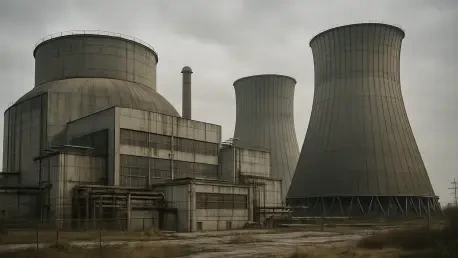What happens when a forgotten piece of industrial history gets a second chance to power millions of homes, and could this revival signal a new era for energy infrastructure in the United States? In Covert Township, Michigan, a shuttered nuclear facility has roared back to life, challenging long-held assumptions about energy infrastructure. The Palisades nuclear plant, once deemed a relic, has achieved a groundbreaking milestone by transitioning to “operations” status as of August 25 this year. This revival raises a profound question: could dormant nuclear plants hold the key to stabilizing America’s energy grid, or are they a Pandora’s box of risks waiting to be unleashed?
A Historic Turnaround: The Palisades Revival
The story of Palisades is one of resilience against the odds. Originally shut down in 2022 after decades of operation, the plant seemed destined for permanent closure until Holtec International took ownership with a bold vision. On August 25, after rigorous evaluations and federal approvals, it became the first decommissioned nuclear facility in the U.S. to return to “operations” status, a designation that signals readiness to prepare for power generation once final steps are complete. This achievement marks a pivotal moment, spotlighting the potential to repurpose aging infrastructure in a world hungry for sustainable energy solutions.
This revival didn’t happen overnight. The Nuclear Regulatory Commission (NRC) granted critical approval in July, paving the way for Holtec to receive nuclear fuel and begin preparatory work. While the plant isn’t yet producing electricity, its projected capacity of over 800 megawatts could significantly bolster Michigan’s energy reserves once fully operational. The journey, however, is far from over, with technical hurdles still looming on the horizon.
The Urgency of Nuclear Revival in Today’s Energy Landscape
Energy security has never been more critical for the United States. With soaring demand driven by population growth and industrial needs, coupled with the pressing mandate to slash carbon emissions, nuclear power is re-entering the spotlight as a viable bridge to a cleaner future. Decommissioned plants like Palisades, previously written off as obsolete, are now viewed as strategic assets that could reduce dependence on fossil fuels without the lengthy delays of new construction.
The numbers paint a stark picture. According to the U.S. Energy Information Administration, nuclear energy accounts for about 19% of the nation’s electricity, yet many plants have shuttered over the past decade due to economic pressures. Reviving existing facilities could offer a faster, more cost-effective path to meeting energy goals, especially in states like Michigan where grid reliability is a growing concern. This trend signals a shift in thinking—old infrastructure might just be the new frontier.
Unpacking the Palisades Restart: Obstacles and Opportunities
Delving into the specifics of the Palisades restart reveals a complex blend of innovation and uncertainty. The transition to “operations” status is a historic first, but it’s only a stepping stone. Holtec International must still reassemble key components like the main generator and turbine, a process with no definitive timeline. Despite these challenges, the potential payoff is immense—over 800 megawatts of clean energy could transform the regional grid if all goes according to plan.
Beyond the immediate restart, Holtec has ambitious long-term goals. Plans are underway to develop a small modular reactor at the site by the early 2030s, a move that could position Palisades as a hub for cutting-edge nuclear technology. Yet, skepticism persists about whether these aspirations can withstand practical and regulatory scrutiny. Safety concerns, in particular, remain a sticking point, with every step forward shadowed by questions of risk management.
Perspectives on the Ground: Hope Versus Hardline Criticism
Holtec International champions the Palisades project as a game-changer for the nuclear industry. “This is a milestone for America’s energy mix,” a company spokesperson declared, underscoring the plant’s potential to deliver reliable, low-carbon power under strict federal oversight. Emergency plans are in place, and continuous inspections aim to ensure compliance, reflecting a commitment to safety amid public scrutiny.
Not everyone shares this optimism. Kevin Kamps of Beyond Nuclear, a prominent advocacy group, has lambasted the restart as a “zombie reactor scheme” that unfairly burdens taxpayers and ratepayers. He argues that the project poses significant threats to health, safety, and the environment, highlighting unresolved issues from nuclear power’s past. This clash of views encapsulates a broader national divide, where the promise of clean energy collides with lingering fears of catastrophe.
Charting the Path Forward: Keys to a Sustainable Nuclear Comeback
For projects like Palisades to succeed and inspire similar revivals, a strategic framework is essential. Transparency must be at the forefront—Holtec should commit to regular updates on costs and progress to foster public confidence. Equally important are robust safety measures, including independent audits and active dialogue with local communities to address valid concerns raised by critics.
Policy support could also play a transformative role. Incentives such as grants or tax breaks for repurposing nuclear infrastructure might encourage more companies to follow suit, aligning these efforts with national clean energy targets. Additionally, embracing innovations like small modular reactors could modernize the sector, making nuclear power more flexible and efficient. If executed thoughtfully, these strategies could shift the narrative from doubt to determination, setting a precedent for other dormant plants across the country.
Reflecting on a Bold Experiment
Looking back, the saga of the Palisades nuclear plant unfolded as a daring experiment in energy innovation, balancing on the edge of promise and peril. It stood as a testament to what was possible when ambition met opportunity, yet it also exposed the deep fractures in public trust surrounding nuclear power. The journey from shutdown to revival captured a nation’s struggle to redefine its energy future amid competing priorities.
Moving ahead, stakeholders need to prioritize actionable solutions—rigorous safety protocols, clear communication, and strategic investments—to ensure that such revivals strengthen energy security without compromising public welfare. Policymakers must consider how to integrate nuclear restarts into broader sustainability goals, potentially through federal backing for modern technologies. Communities, too, deserve a voice in shaping these projects, ensuring that their concerns guide the path toward a balanced and resilient energy landscape.









